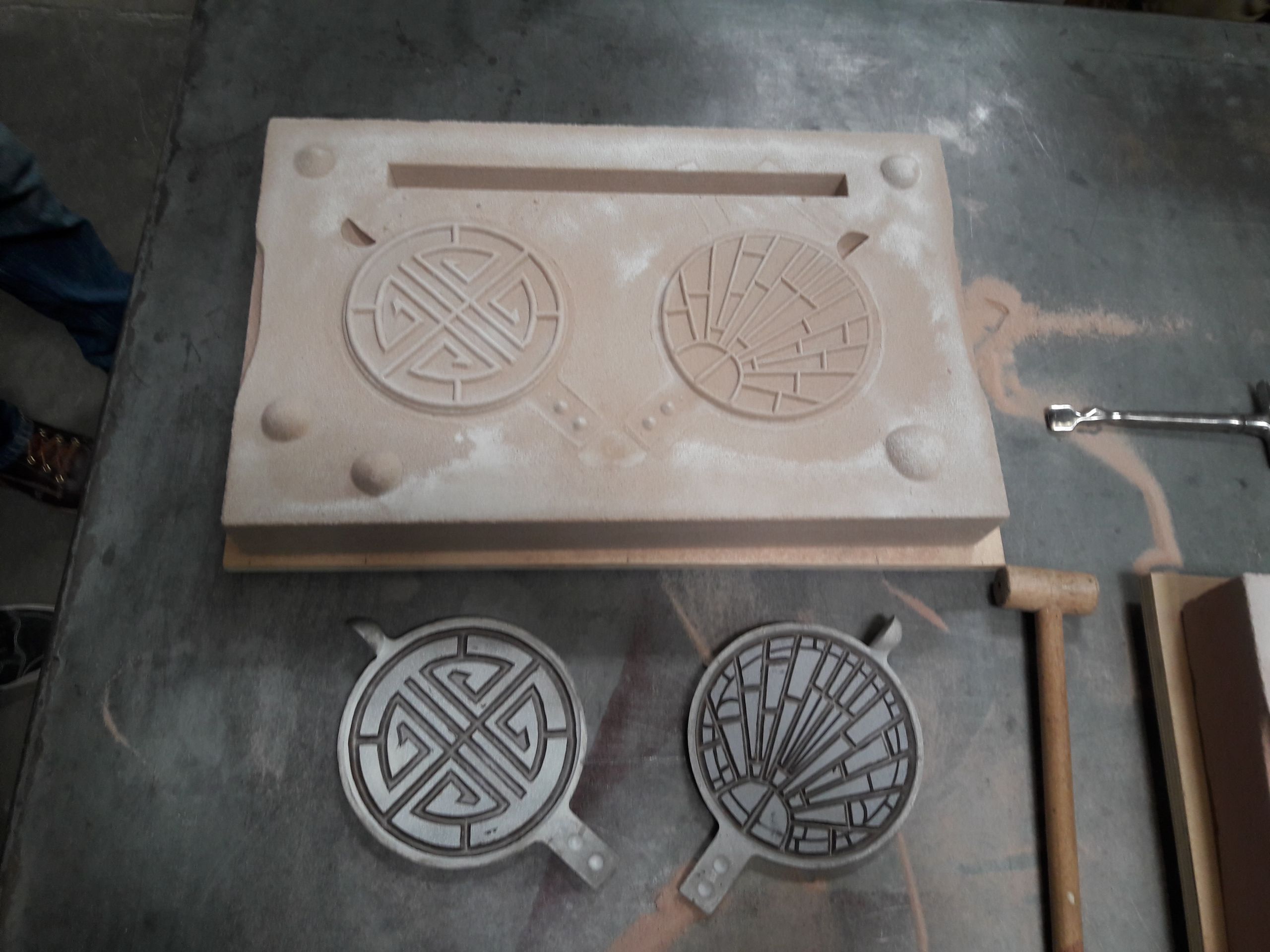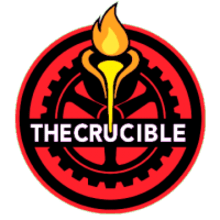MetalworkingMetal
Beginners Guide to Metal Casting
By Kristin Arzt
What is metal casting?
Metal casting is a 7,000-year-old process used in both manufacturing and fine art. During metal casting, molten metal is transferred from a crucible into a mold to create a positive metal cast object. The metal and mold are cooled, and the metal object is removed and finished. Traditional metal casting techniques include lost-wax casting, plaster mold casting, die casting, and sand casting, to name a few. These metal casting processes may be completed in a foundry or a jewelry studio.
Metal casting processes have been known for thousands of years, and have been widely used for creating sculptures, jewelry, transportation, weapons, and tools. The first known cast object is a copper frog that dates back to 3200 BCE, found in present-day Iraq. During the Bronze Age, metal casting exploded in popularity. Bronze was a much easier and stronger alloy to work with, compared to gold and was cast into tools and weapons using stone molds. During the Shang Dynasty in China, single-use sand molds were first utilized for casting metals. Around 1000 BCE, India was among the first ancient civilizations to cast silver and copper coins for currency. Later, around 500 BCE, the Zhou Dynasty introduced iron casting. Throughout history, the Middle East and West Africa both commonly utilized lost wax casting. Many years later, metal casting technology boomed in the 20th century, developing processes that most modern methods are based on.
What is metal casting used for?
Throughout history, metal casting has been used to make tools, weapons, and religious objects. Casting is an inexpensive way to create complex shapes and designs and to easily create multiples of the same object. The metal casting process has broad uses across manufacturing, especially in the development of technology and transportation industries. Castings can range in size from a few grams, like a cast ring, to thousands of pounds, like a diesel engine. Cast shapes vary in complexity from something quite simple to incredibly intricate.
While transportation and heavy equipment make up the majority of castings produced worldwide, metal casting is an incredibly versatile process. You will likely find components of metal casting in the following objects:
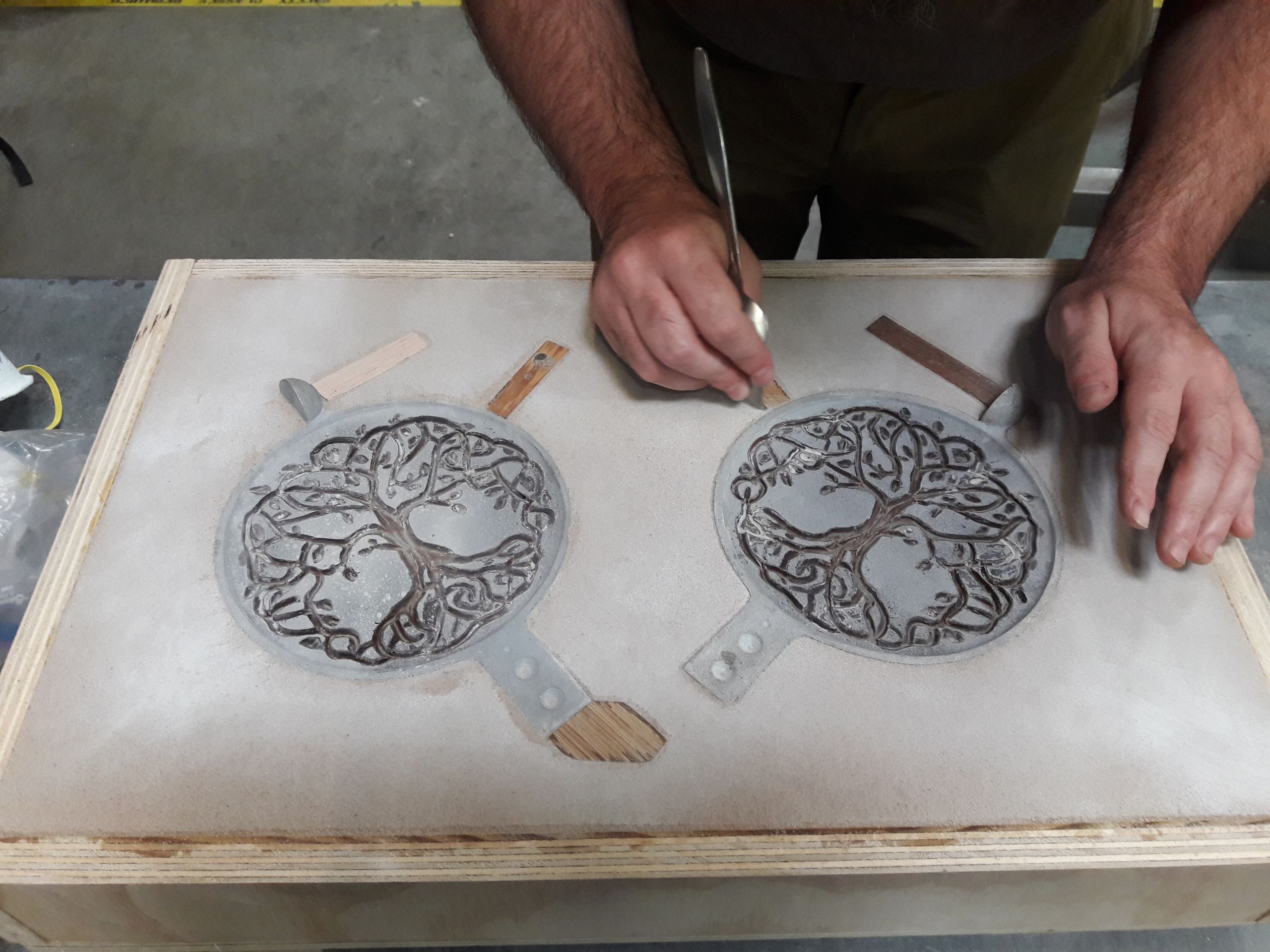
Different types of metal casting
Metal casting comes in two main categories: processes with reusable molds and processes with expendable molds. In both processes, the caster melts the metal material in a crucible, pours it into a mold, then removes the mold material or the casting once the metal has cooled and solidified.
Expendable mold casting
Expendable mold casting is a method that utilizes single-use or temporary molds. These molds are typically made from resin-bonded sand, ceramic shell, plaster investments, or foam. Making your own expendable mold is an inexpensive and relatively fast process. It works best for small-volume manufacturing.
Non-expendable mold casting
Non-expendable molds are reusable and permanent molds for metal casting. They are stronger and better suited to withstand the hot temperatures of molten metal than others. Permanent molds are often made of metals like steel or cast iron because of their high strength, low porosity, and resistance to heat. Non-expendable molds are ideal for creating multiples of the same cast metal object.
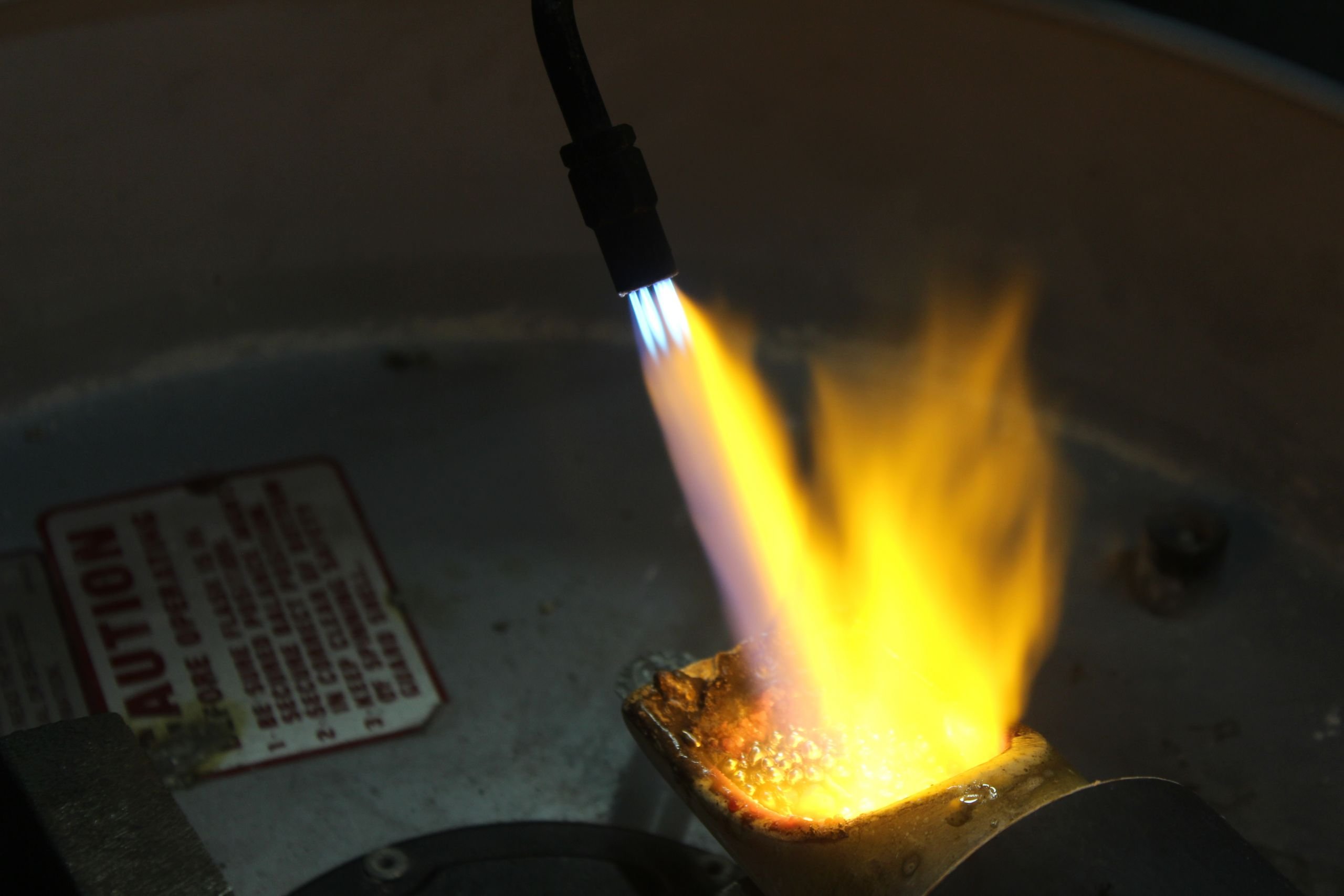
The basic metal casting process
The basic metal casting process involves creating a pattern and a mold, then pouring molten metal into the mold. You will then extract the solid metal casting and finish your piece. This process is customizable for different types of metal casting, along with shapes, sizes, and more.
Step 1: Create the pattern
Before you make your mold, you must create a pattern to determine the mold’s shape. The pattern can be a 3-dimensional model of your final cast. It may be shaped in wax, sand, plastic, or even wood. Some casters use molds made of plaster or silicone, which are materials that could not withstand a molten metal cast, but allow the caster to mass create wax multiples to use in expendable mold casting. When you are shaping your pattern, make sure you account for any anticipated shrinkage when the metal cools. Patterns may also be gated with sprues to allow the molten metal to flow into the mold.
Step 2: Make the mold
After you have created a pattern, it is time to make your mold. As we mentioned above, you may choose to make a reusable mold, which is typically made from metal, or a single-use mold, which may be made from sand, plaster, or ceramic shell. Each of these methods for making molds are optimized for different casting metals and various levels of pattern complexity. If you are working with a wax or plastic pattern, you can burn out the pattern inside of a kiln.
Step 3: Choose the metallic alloy
All metal castings are produced from either ferrous or non-ferrous alloys. Alloys are a mixture of elements that provide the best mechanical properties for the final cast’s use. Ferrous alloys include steel, malleable iron, and gray iron. Non-ferrous alloys that are most commonly used in casting are aluminum, bronze, and copper. If you are working with precious metals in a jewelry studio, you may work with silver, copper, gold, and platinum.
Step 4: Melt the alloy
Melting processes vary between alloys because each alloy will have a different melting temperature. Essentially, melting consists of placing the solid alloy in a crucible and heating it over an open flame or inside of a furnace.
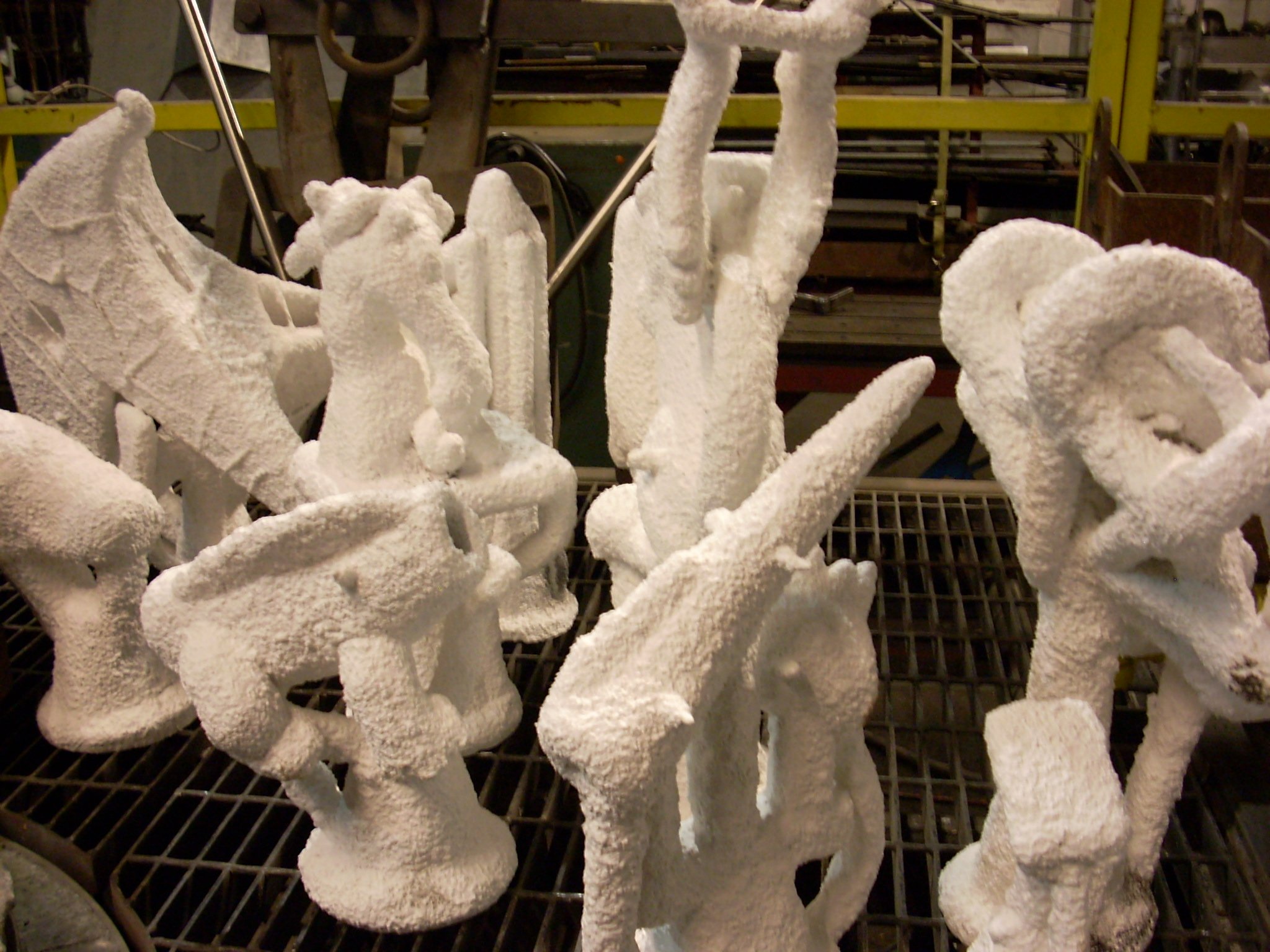
Step 5: Pour into the mold
Pour the molten metal into the mold cavity. If it is a small casting, you may simply pour from the crucible where the metal was heated directly into the mold. A larger casting may require a small team to support heating the metal inside of a furnace, and transferring the metal into a larger crucible or ladle before being poured into the mold.
Make sure to follow all recommended safety guidance when pouring molten metal. Make sure you wear protective clothing, including natural fiber clothing, long pants and sleeves, insulated gloves, and safety goggles. Work in a well-ventilated space to avoid any risks from dangerous fumes. Make sure you have a chemical fire extinguisher nearby and keep your walkway between the furnace and the mold clear. Allow the mold to solidify before moving onto the next step.
Step 6: Remove the casting from the mold.
When the metal has cooled and solidified, you can remove it from the mold. If you cast into a single-use mold, you can break away the mold from the casting. If you used a plaster investment, you will want to quench the plaster in water after the metal has solidified. The water will help break away the mold. For reusable molds, you may use ejector pins to extract your casting.
Step 7: Finishing
File and polish your solid metal cast! This may involve cleaning your cast metal object, like scrubbing away excess mold material in water, breaking off the casting gates with clippers for small objects, or even an angle grinder for large pieces.
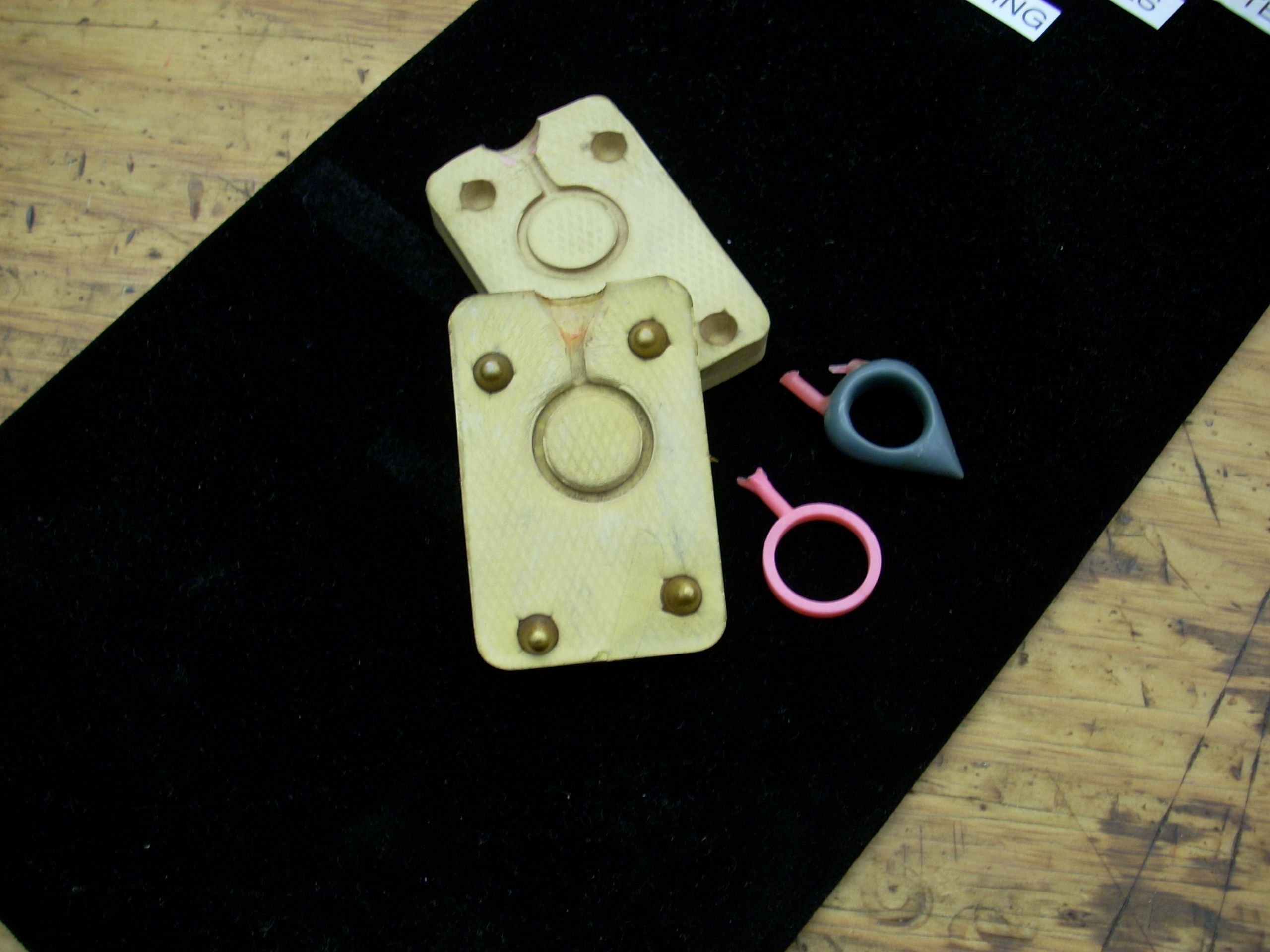
Learning how to cast metal
Whether you want to cast a small ring or a complex piece of metal for a car engine, the possibilities in metal casting are endless. The type of metal casting you choose to pursue will depend on your vision for the final product. If you are interested in pursuing jewelry, you will want to work with precious metals such as gold, silver, and platinum. If more industrial projects pique your interest, your casting may range from smaller aluminum tiles to a cast-iron skillet. Once you nail down your goals, you can explore options to educate yourself. A local metal arts guild provides members with community, educational resources, and more. We always recommend beginners start in an in-person class to cover safety requirements, gain access to a studio, and learn metal casting from a professional.
Learn metal casting at The Crucible
The Crucible offers metal casting classes in both our Foundry and Jewelry Departments. Our Foundry offers students an opportunity to create their own sand molds and ceramic shell molds. We offer a fully-equipped wax room where you can shape and detail your patterns for lost wax casting. You can pour aluminum, bronze, and even iron in our foundry classes. In our Jewelry classes, you can make your own unique small pendants, rings, and more to be cast in silver and bronze. Our jewelry classes allow you to learn the full metal casting process from creating a wax pattern to pouring molten metal, then finishing your piece.
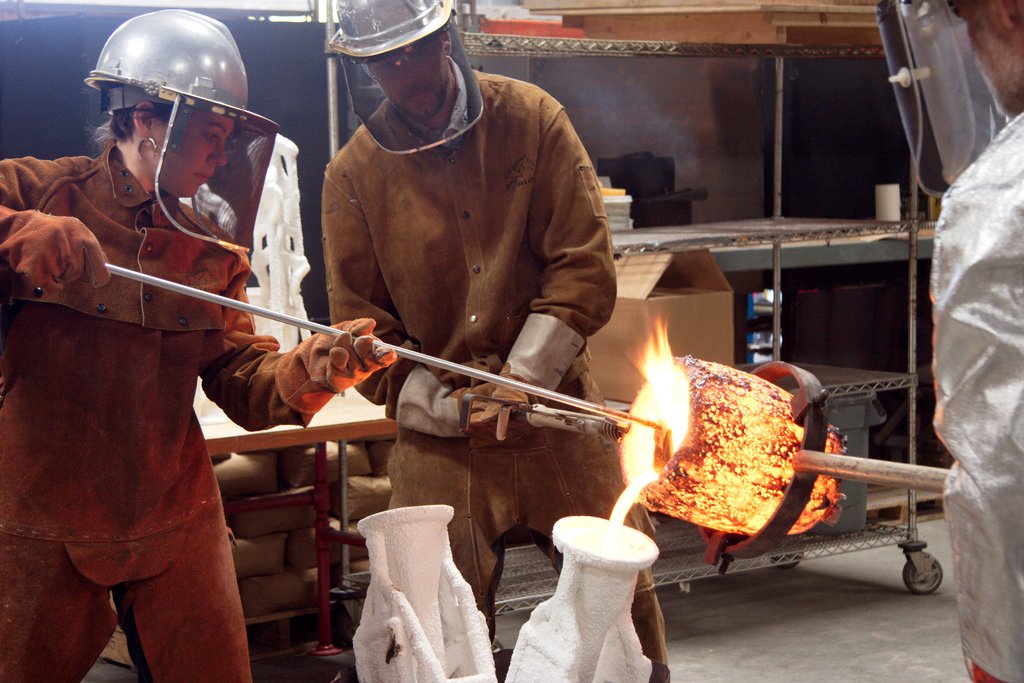
Metal casting FAQs
Can I cast metal at home?
You can set up your own home foundry and casting station, with safety at the foremost importance. Make sure you wear protective clothing, including natural fiber clothing, long pants and sleeves, insulated gloves, and safety goggles. Work in a well-ventilated space to avoid any risks from dangerous fumes. Make sure you have a chemical fire extinguisher nearby and keep your walkway between the furnace and the mold clear.
What are the different types of metal casting?
The main types of metal casting utilize either expendable or non-expendable molds. Expendable mold casting utilizes a single-use mold made from resin-bonded sand, ceramic shell, plaster investment, or foam. Common types of metal casting that utilize expendable molds are lost wax casting, investment casting, and sand casting. Non-expendable molds are reusable and permanent molds and made from cast iron or steel. Non-expendable molds are used in die casting and slush casting.
What tools do you need to cast metal?
To cast metal, you will need your safety equipment, a well-ventilated workspace, a mold, a crucible, tongs, and a furnace, a torch, or a kiln.
What metals are easiest to cast?
Aluminum is an easy material for metal casting because it is inexpensive, widely available, and melts quickly with a propane torch or in an electric kiln.
How do you make a mold for casting metal?
These are different types of molds for different projects. First, determine if you will make an expendable or non-expendable mold. Ceramic shell molds are made from dipping a wax model in multiple layers of ceramic shell slurry before burning out the wax and casting the metal inside. Sand cast molds are built inside of a wooden frame and are shaped using an impression or a model or the design is carved directly into the sand. Plaster investment molds also use some sort of frame, made from either wood or metal. The wax model is placed inside of the frame, investment is poured over the model, and the mold is left to set.
